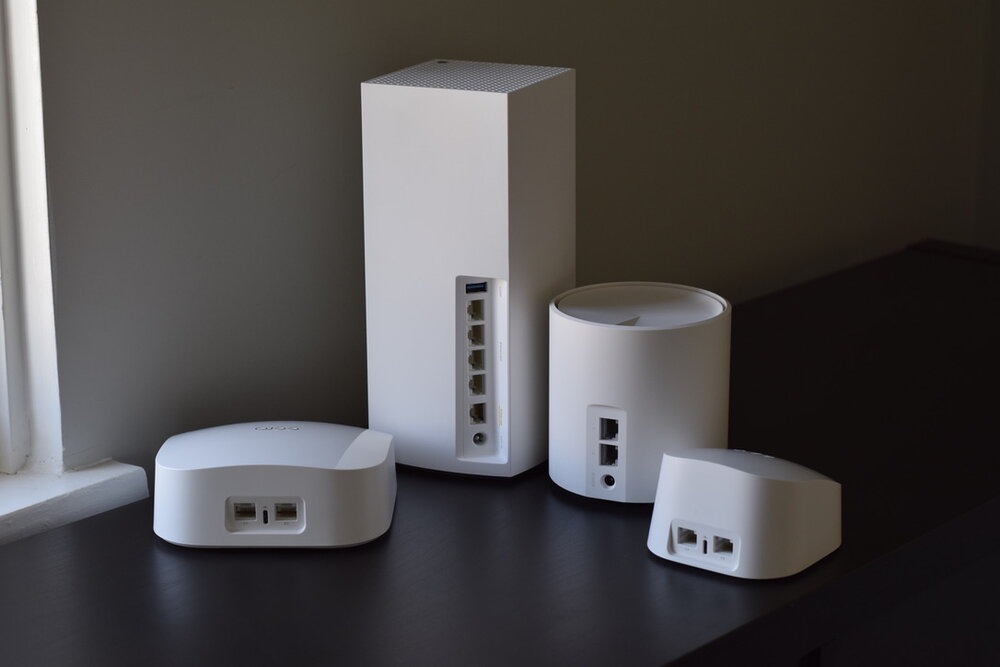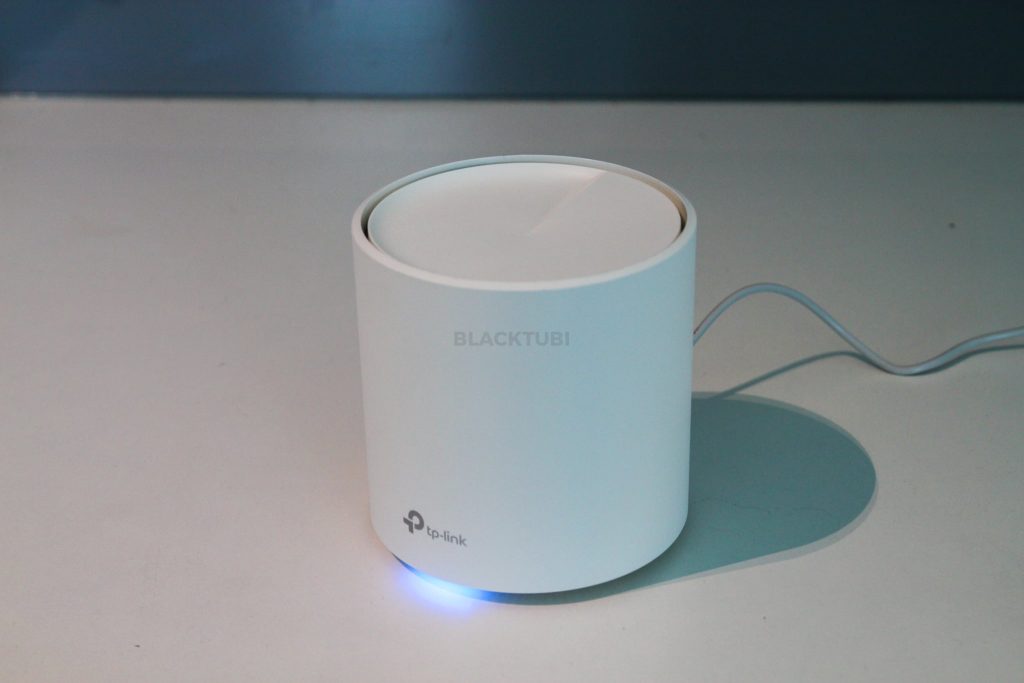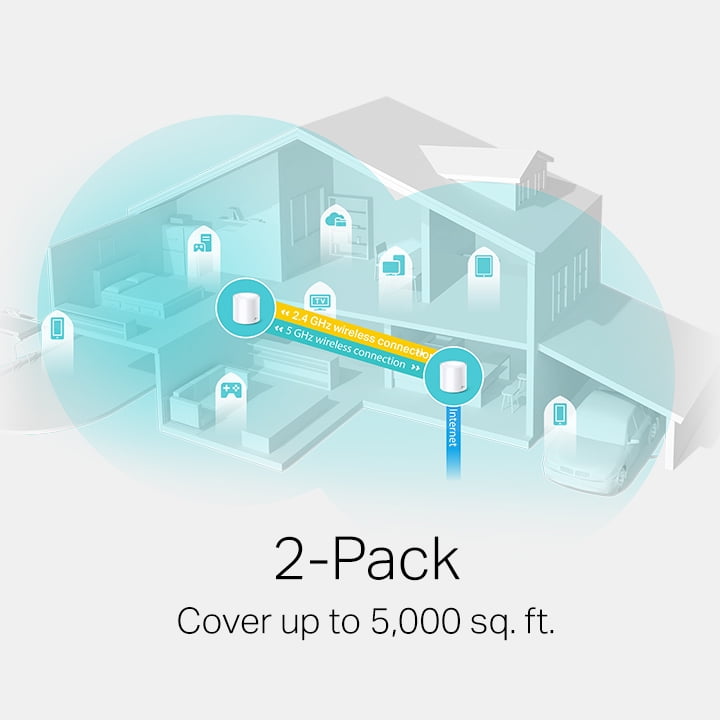Tp Link Deco Ac1200 Review

Tp-Link Deco M3: Design
TP-Link Deco M3 does not use identical units for configuration. Instead, it uses a Deco M4R router base that is connected to a pair M3W extenders. This is similar to the design of the MeshForce M3 and means that the satellites can be hidden easily but need to be set up near an AC outlet.
If you found this entertaining, you might enjoy
Ubiquiti Amplifi Review
While the cylindrical and tower-shaped router measures 7.4 x 3.6 x 3.6 inches, the plug-in extenders are 4.9 x 2.7 x 1.3 inches. A nice trick is that M3W nodes can be set up right-side-up or upside down to not block an adjacent outlet.
The cases are made of white plastic, while the tops on router towers have a black finish. TP-Link does not sell mounting hardware. However, Aobelieve offers small shelves made of plastic for the tower at $16 per piece. They are not required by the extenders.
The tower expels excess heat through the side vent and spiral design at the top. The cooling for the extenders is simpler with shotgun vent holes on each side. Both were warm enough to touch in testing.
An LED light is embedded into the spiral-shaped tower top that displays information about network status. When it’s blue, the device is ready to be set up and green means it’s online. Red means there’s an issue with the network connection.
The extenders have four LEDs with the expected On/Off light and show whether their 2.4- and 5GHz networks are connected. A crude signal strength indicator LED that can range from red to white, indicating a good Internet connection, or pulse white if the extender has Wi-Fi Protected Setting. You can turn them all off using the app. There’s also a way for them to go on/off according to a set schedule.
The system is powered by Qualcomm hardware that creates a dual band Wi-Fi 5 network. The system can deliver speeds of 300Mbps via a 2.4GHz connection and 867Mbps through 5GHz transmissions. The Deco M3 is theoretically capable of moving 300Mbps over the 2.4GHz band and 867Mbps over 5GHz. It combines MUMIMO transmissions along with TP-Link’s Deco Mesh Technology in order to form a single network name. It has an AC1200 rating but lacks the ability to use 160MHz data channels and each unit has two antennas inside unlike the Vilo VLWF01 satellite’s which have four.
While the router has a WAN and LAN port, the extenders have no physical connectors at all. This means you can’t connect a remote printer or other networked accessory to the Deco M3 like you can with the Tenda Nova MW6 cubes. The router and extenders of the Deco M3 have recessed reset keys.
The Deco M3’s wired networking offers 1Gbps support but not the increasingly popular 2.5Gbps. The USB ports on both units are not available for connecting storage to the network.
The Deco M3 also does without TP-Link’s excellent Home Care router security software that protects the network from intrusions. It matches other systems with its outdated WPA-2 encryption system.

Tp-Link Deco M3 Review: Performance
Ixia’s IxChariot network benchmark was used to create a bustling network of 10 users with data needs in my 100 year-old house using a Samsung Galaxy Book Pro. The TP-Link Deco M3 did well up close with the ability to deliver 539.2Mbps at 15-feet. That’s indistinguishable from that of the Wi-Fi 6-based Deco X20 mesh system’s 544.5Mbps. While the Deco M3 led the cheap mesh crowd, the Vilo VLW F01 kit was well back at 455.4Mbps.
The Deco M3 kit was able to move 93.1Mbps throughput with a distance of 50 feet from the router and the test system. This compares to 102.4Mbps for Vilo VLWF01. These are both within striking distance from the Wi-Fi 6-based Orbi RBK852, which moves 124.5Mbps over the same distance.
If this was to your liking, you might also be interested in
Google Wifi Ac1200 Review
That said, the TP-Link Deco M3 should be fine at distributing a 100-250Mbps internet connection throughout a small to mid-sized home. Pairing it with a faster plan would waste money.
At 75-feet, the Deco M3 delivered 65.5Mbps, which is about 9 percent off the pace set by the VLWF01’s 71.6Mbps. Both blew away the WavLink Halo’s 44.2Mbps.
The RBK852 couldn’t reach 90 feet and the MeshForce M3 managed 25.1Mbps. Deco M3 was able to send email at an average speed of 4.6Mbps. It had a range of 95 feet that was outdone only by the MeshForce M3’s 105 feet.
Deco M3 transmissions performed well in a room 20 feet wide and through walls with 332.1Mbps throughput on either side. That’s slightly better than the Vilo VLWF01’s 320.3Mbps and the Wi-Fi 6-based Deco X20’s 320.5Mbps. Here, the MeshForce M3 pulled up the rear at 165.6Mbps.
When I set up the extenders a floor above and below the router and ran the benchmark software 40-feet away, I got 100.1Mbps (above) and 30.1Mbps (below). These results are in agreement with VLWF01’s 101.2Mbps and 67.1Mbps respectively under similar conditions.
Deco M3 offers a two-year warranty, which is more than the one offered by other mesh kits. This covers hardware up to a year. Add to that lifetime technical support with 24/7 response and you have a Wi-Fi champ that punches above its weight class.
It performed well playing several live feeds over YouTube Premium for eight hours at a time and passed our saturation test. As a ThinkPad T470 computer was set up to play videos, an iPad Pro and MacBook Air played the BBC World Service audio feed and Spotify music while an HP Elite Dragonfly moved files to and from a RAID storage array. While the files were moving back and forth, the video and audio came through without any drop-outs or artifacts.
With the TP-Link networking devices working, the tower used 6.7 watts while each extender used 5.5 watts. The M3 kit costs $21.70 per year if you use the average national rate of 14 cents/kilowatthour.

Tp-Link Deco Mesh Wifi System
The S4 Deco devices have two auto-sensing Gigabit ethernet ports which are useful for when someone needs to plug in something else besides wifi devices. The S4 Deco devices can be used with all TP-Link Wi-Fi devices. This means that if anyone wants to upgrade or expand their network, they don’t have to purchase any additional device. It’s easier to use the S4 Deco units together, so that one user doesn’t slow down the connection of others. There are many features in the S4 Deco unit. The S4 Deco unit can be used to create profiles, blacklist devices, and monitor WiFi usage.
Download the TP-Link app, pick your product, and follow the steps. You can always try again by pressing the button at the bottom of the screen. If you need to add another device (WiFi signal) to your Wi-Fi network, go into the app again and place it in a new location. TP-Link is an app for your phone. It makes it easier to set up WiFi at home.
Download the app, and follow the steps. There were some hiccups, but doing the Try Again button fixed it. You can plug the S4 router into your FIOS modem and add additional units to your home using the app. There are many features in the p. The p allows you to create user profiles that allow you to monitor the use of your internet connection. You can also “blacklist” electronic devices from being connected to your network.
So, I bought one and now everything is good! In looking for a better solution to my problem, I looked at Mesh networking. Mesh networking was designed to be compatible with my FIOS router. It had to be cost-effective. The Deco S4 series from Tp-Link is less expensive than its M4 counterpart and has received positive reviews. I purchased it. TP-Link WiFi extenders are easy to use.
I’m using FIOS 100/100 and I get speeds up to 100 Mbps for my ground and third floors. I also have speeds up to 80 Mbps on the second floor. I use a wired S4 unit on my back deck. The speed drops down to 60 Mbps on the second floor. I spent about 4 hours testing it for stress and found it to be very reliable…consistent and dependable. Your devices will automatically connect to the strongest signal if you use an S4 router. The router will switch between networks automatically so you don’t have to change them. It is extremely fast. I have FIOS 100/100 service and I get speeds of 100+Mbps on my ground and third floors (both are wired) and almost a full 80 Mbps on my second floor with a non-wired S4 unit.
Outside on my back deck, the speed drops to 60Mbps…incredible! I spent 4 hours stress testing the network and found it to be rock solid…very consistent and dependable. Deco S4 WiFi booster. The Deco S4 has a good WiFi signal and is easy to setup. I am happy with the coverage of the product and it is not a bottleneck for your internet. The price is very nice too! This is a long review.

Tp-Link Deco X60 Review: Features And Performance
With Wi-Fi 6 support, the DP-Link Deco X60 can reach throughput speeds of 3,000Mbps – although obviously your phones and laptops need to support Wi-Fi 6 as well to reach the top speeds. Each unit houses four antennas which are nicely hidden, and with the three-pack we were testing here, TP-Link says you can cover an area of around 7,000 square feet (that’s a little over 650 square metres, or about a tenth of a football pitch).
If you enjoyed this, you might like
Orbi Wifi 6 Review
We certainly have no reason to doubt TP-Link or the speed of the Deco X60. Although our home has good Wi-Fi coverage, we found that the network created by the TP Link Deco X60 was a bit more extensive and reached slightly faster speeds during our tests. We had absolutely no problems in getting connected and staying connected, even when moving around the house.
Deco X60 makes use of advanced networking technology called OFDMA and MU-MIMO. This allows as many devices to be connected as possible without slowing down. It is a crucial feature in today’s tech-literate homes. Although we did not have enough devices to try this out, it was clear that we had no problems connecting to new phones and computers. It’s always good to have an extra capacity.
The antivirus and parental control features weren’t particularly useful for us, but they’re there if you need them. These are the sort of software features that the likes of Google and Eero tend to do better with their own mesh networking kits, but there are no major problems with what TP-Link has put together here, and everything is simple to use.
-
Check out the best 2-in-1 laptops on the market
Tp-Link Deco M4 Neighbors
At the time this review was written, the TP-Link Deco Family consisted of these devices:
Deco S4, Deco T5, Deco T7, and Deco H9 are the highlights of this review.
As I mentioned, the M5, M7, and M9 appear like twins. Deco M4 stands alone. Take a look at the differences between these systems.
Two-band
Deco M4 can be used for simple networking or expanding an existing mesh network. Deco M5 is equipped with four antennas, which are two more than those in the M4. It’s designed to handle a much larger setup than that of the M4. TP-Link Deco P7 is distinguished by the presence of Powerline technology (HomePlug AV600) for organizing a network connection via an electrical network. Deco M9 has an even greater number of antennas (eight) and three bands for connection, as well as support for ZigBee HA1.2 – a standard that is used when building networks for smart home devices.

Tp-Link Deco M5 Review: Performance
The TP-Link Deco M5 was installed at my home. I ran the usual tests with the iperf3 command line application. The Deco M5 delivers strong Wi-Fi signals house-wide, as you can see from the chart below.
As expected, its close-range performance figures aren’t all that impressive. The BT Whole Home Wi Fi system is superior in terms of specifications, and provides the fastest speeds within the same room. The Deco M5 single-node performance was also tested at long distance – this is to see how far your network can go from the node closest to you. I found the Deco M5 performs well and matches BT Whole Home Wi Fi. However, Google Wifi performs better.
The TP-Link Deco M5 performed best in mesh configuration, delivering speeds that all but matched BT Whole Home Wi-Fi in my kitchen – a notorious Wi-Fi black spot in my house – but edged fractionally in front of Google Wifi. It was the configuration that delivers the most throughput at this spot, so I tried it with just two nodes. However, the results were a bit slower than the BT system. To test how the throughput changes when there are more nodes spreading the network, I added a third Node. The TP-Link came out on top. The differences are small, though – small enough that if I ran the tests again the results could be reversed.

Tp-Link Deco M3 Review
Using a hybrid approach to mesh networking, TP-Link’s Deco M3 can deliver just enough performance for a mid-sized home and give more expensive mesh kits a run for the money. However, if you want extenders with LAN ports, you’ll have to look elsewhere.
Wi-Fi Optimization
The TP-Link Deco M3 is a combination tower router and plug-in extenders that offers a new approach to creating a mesh network. The app was easy to use and has an excellent optimization process that streamlines network operations. However, the extenders do not have networking ports. The combination of good performance, 24/7 support, a two-year warranty and low-price tag make the Deco M3 a winner.
This TP-Link Deco M3 review can help you determine if it is a good budget choice or if you should spend more to upgrade your home network.


